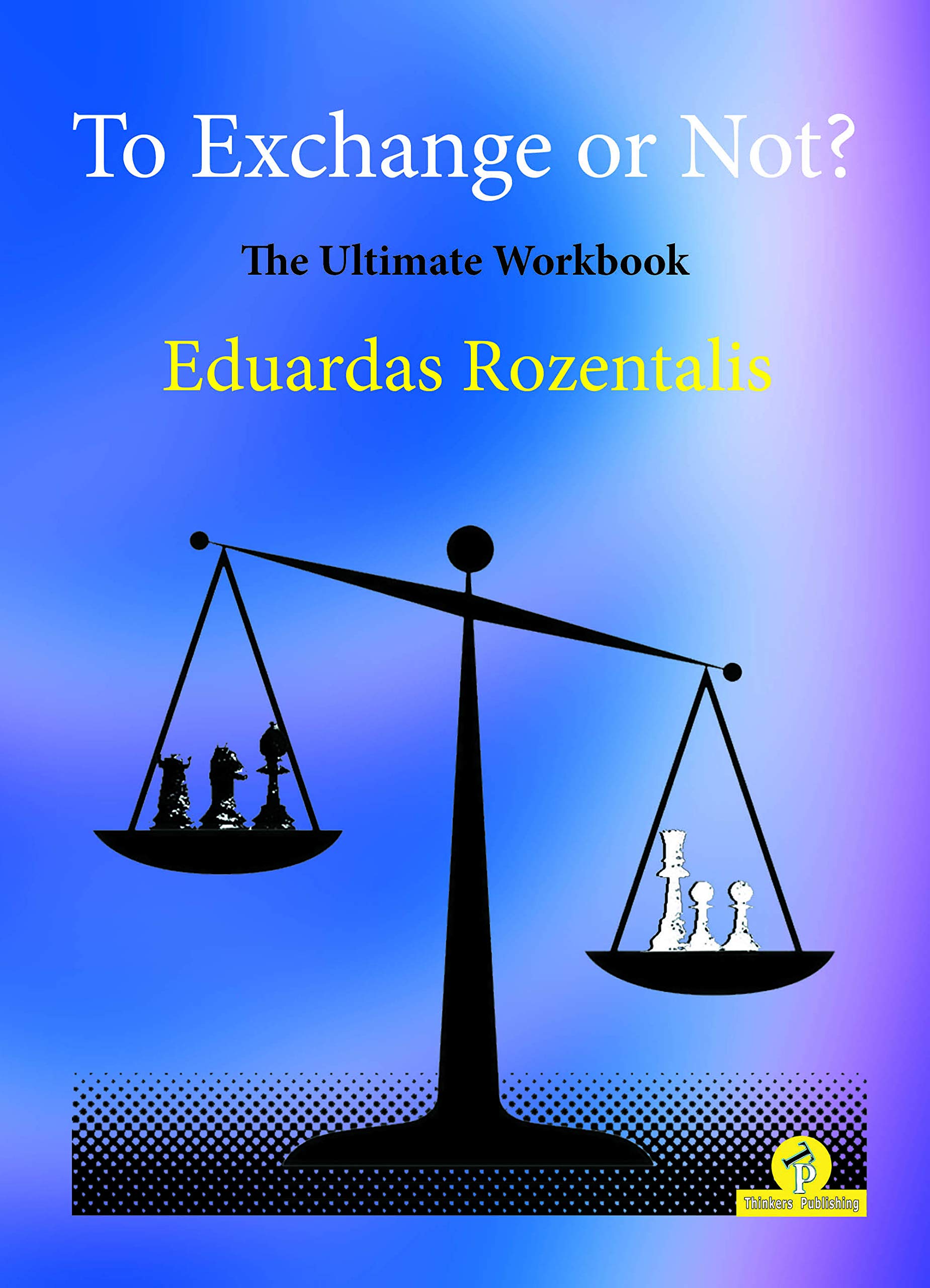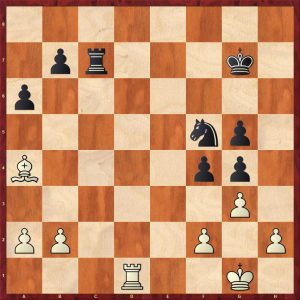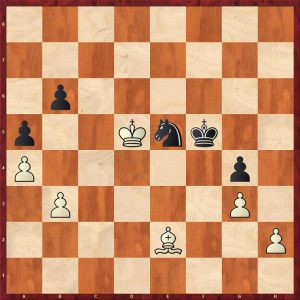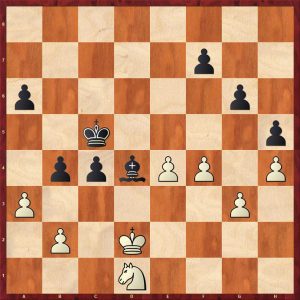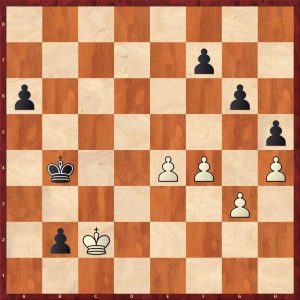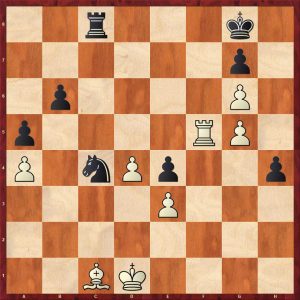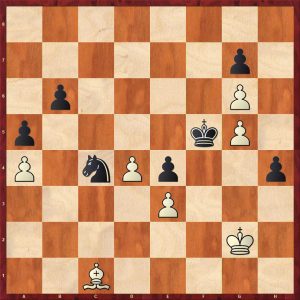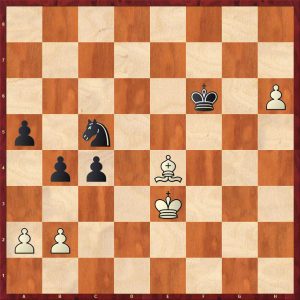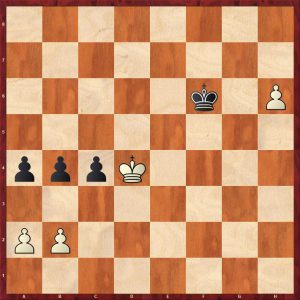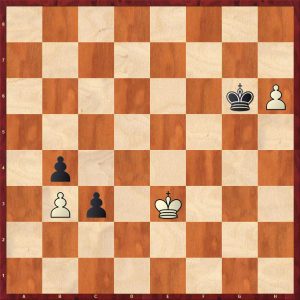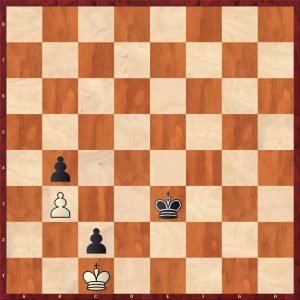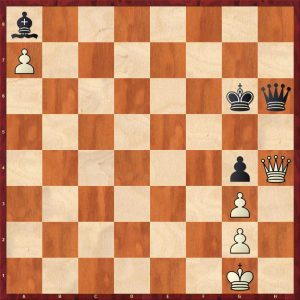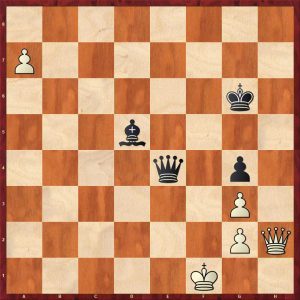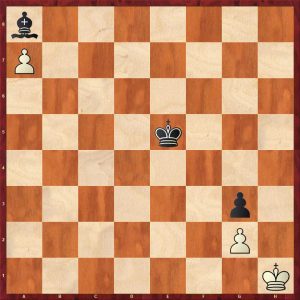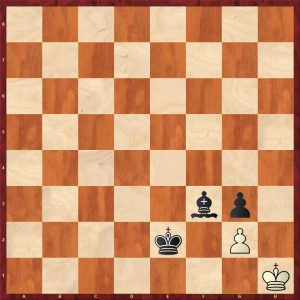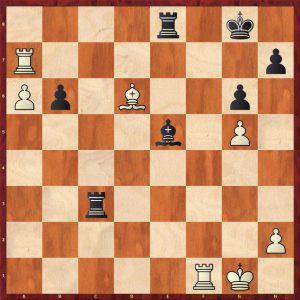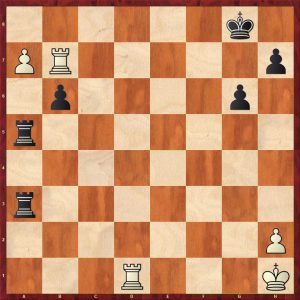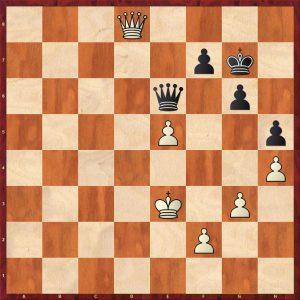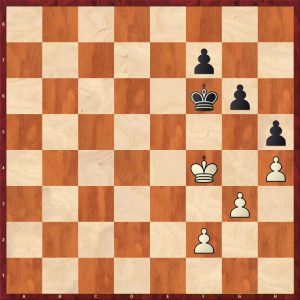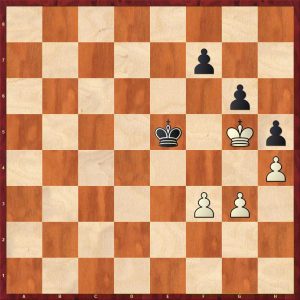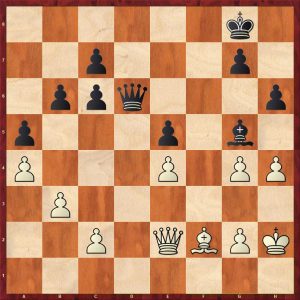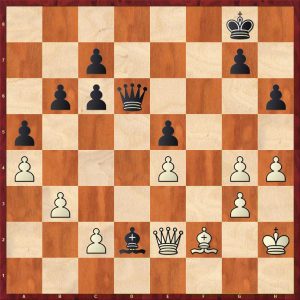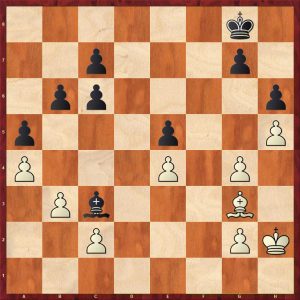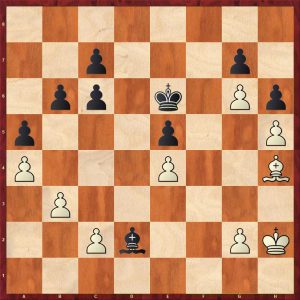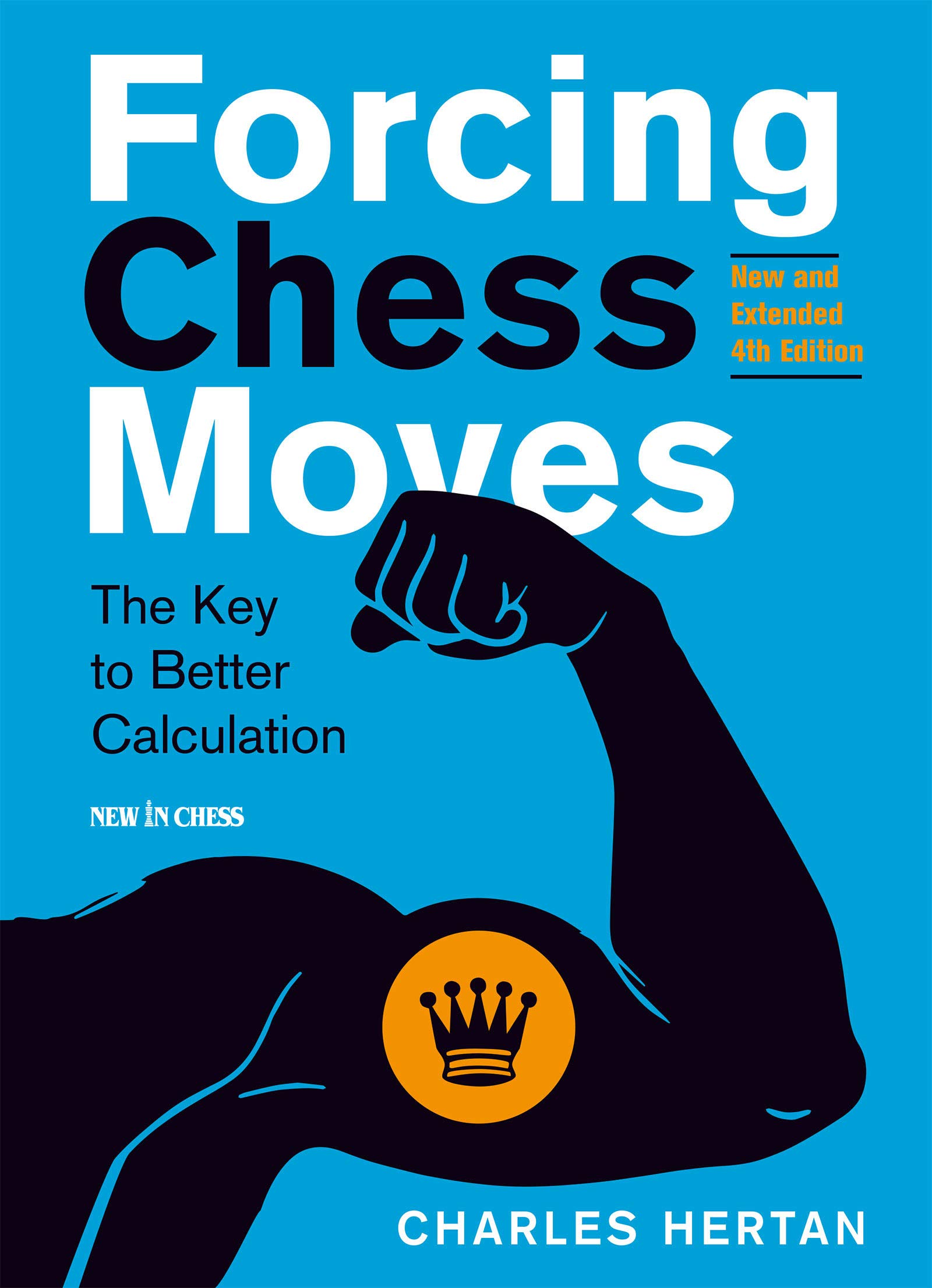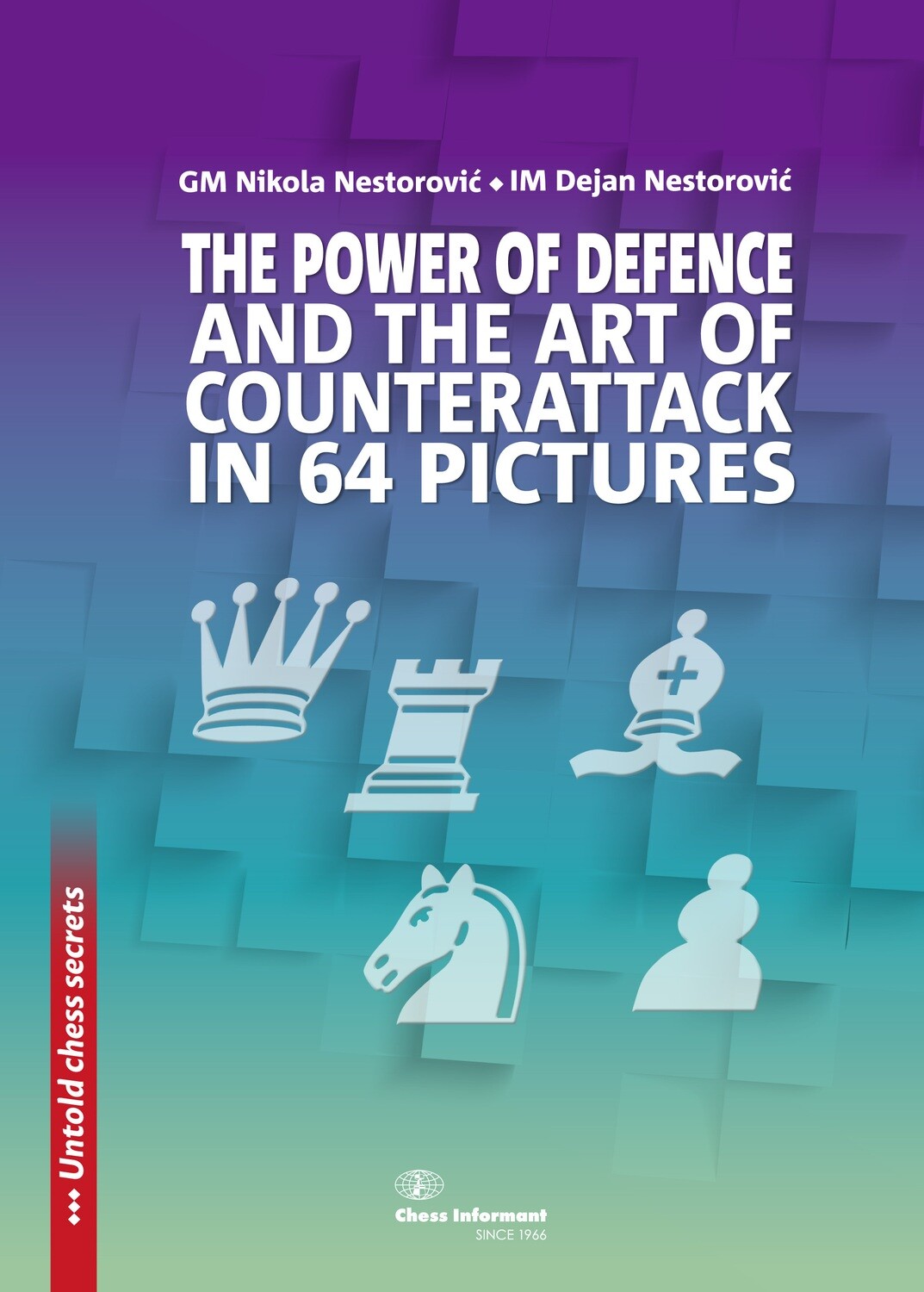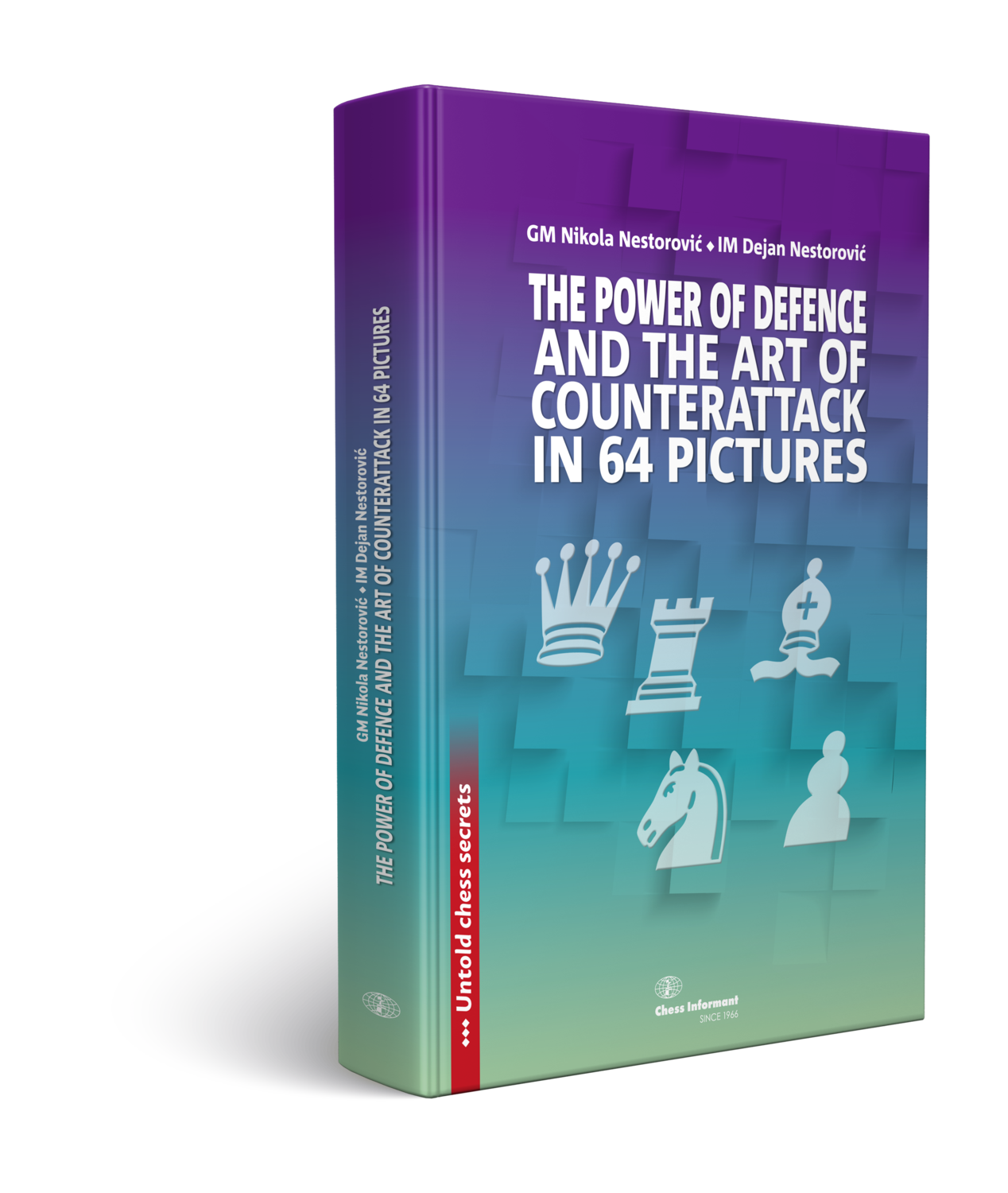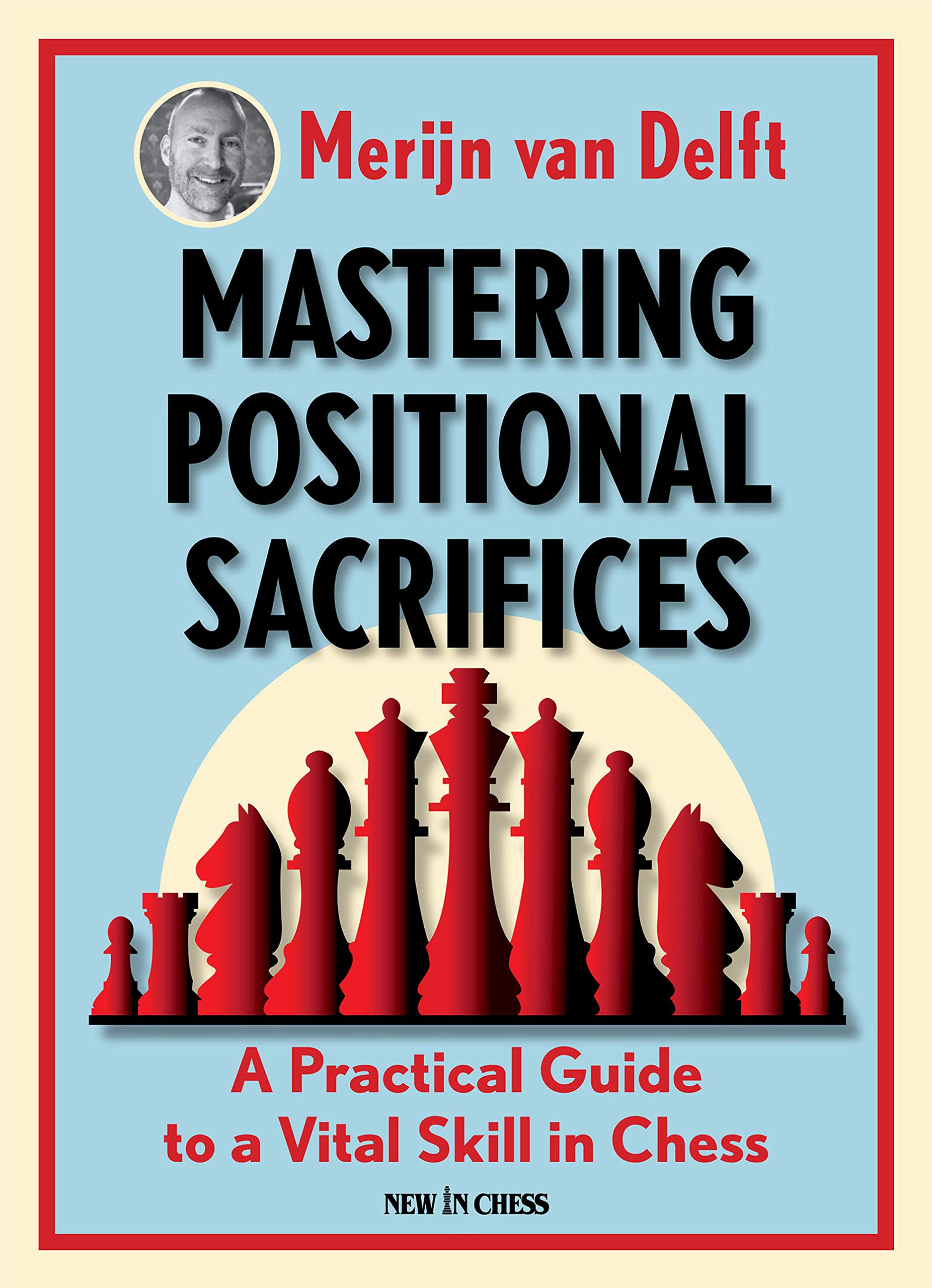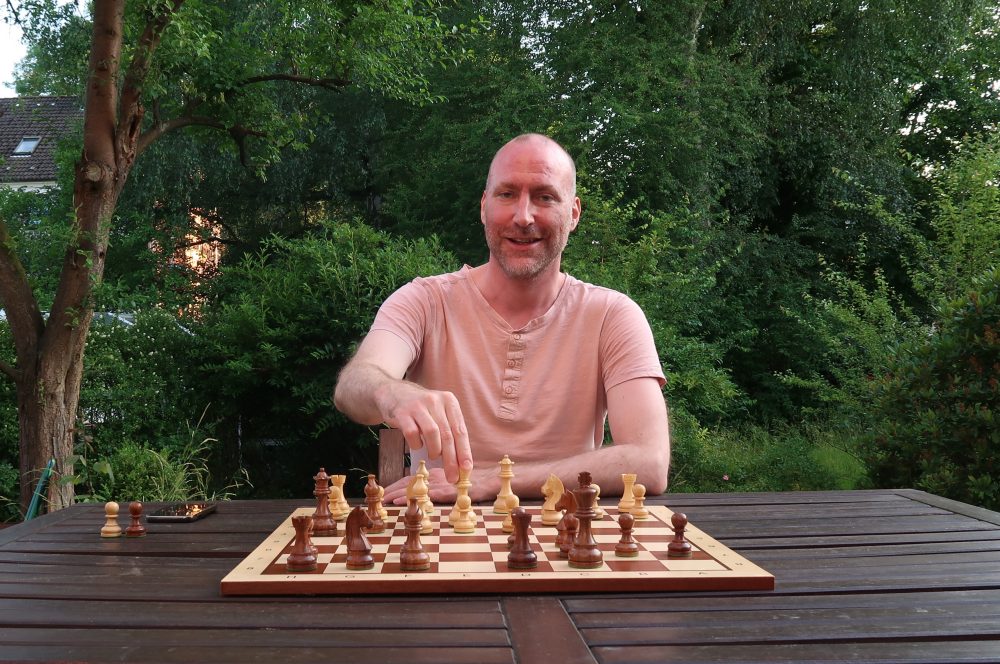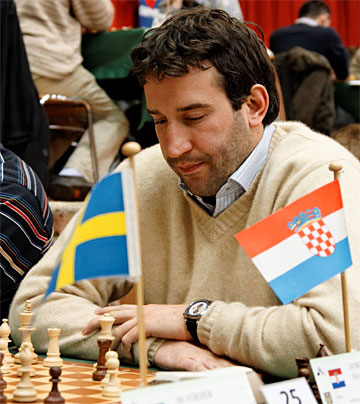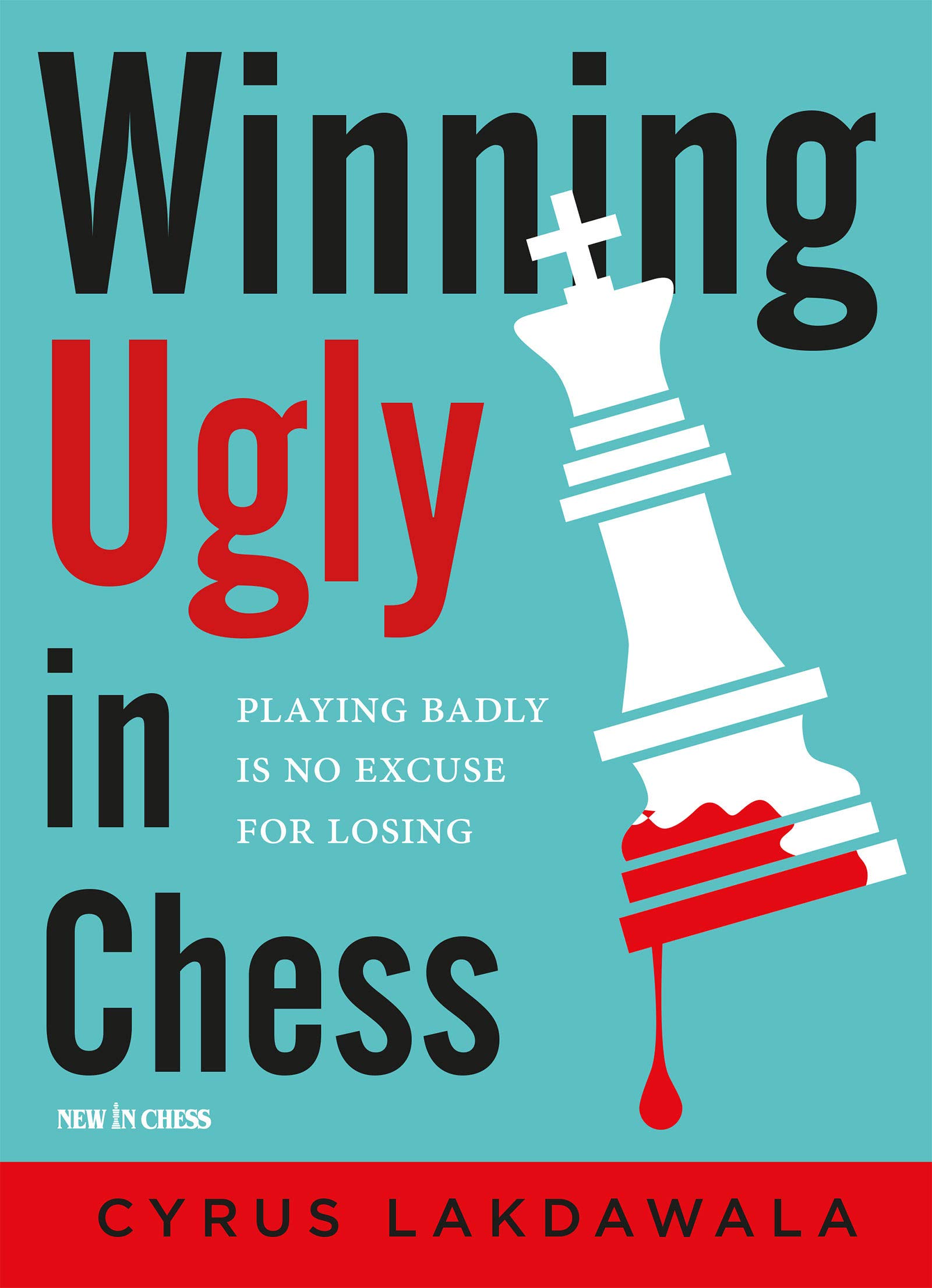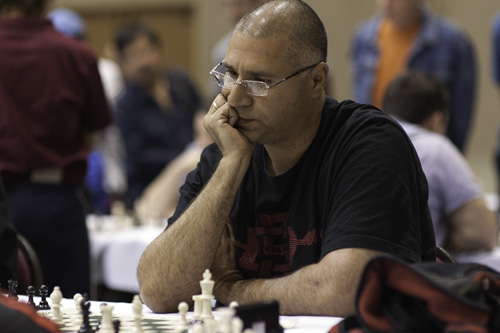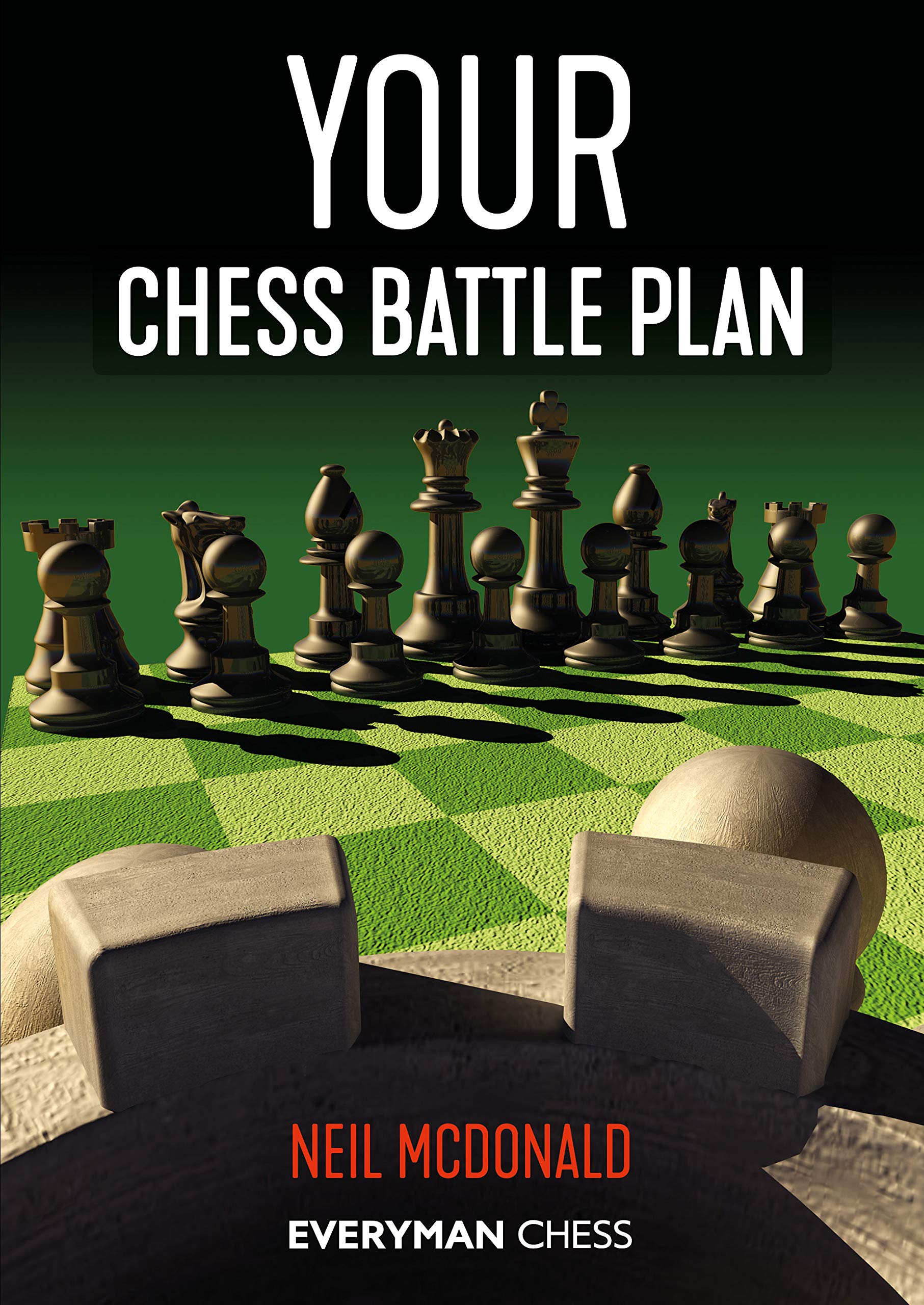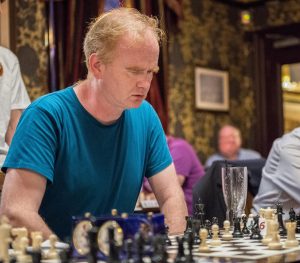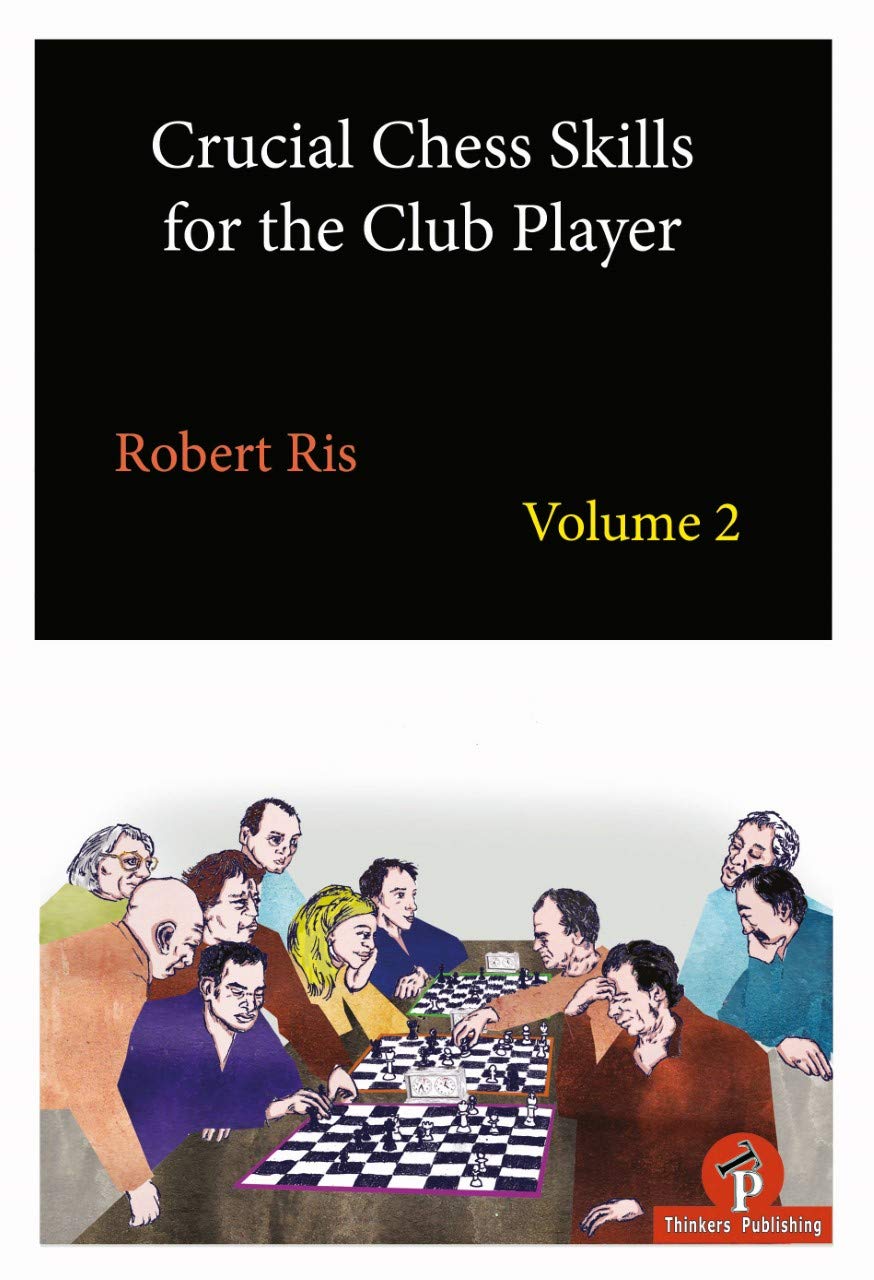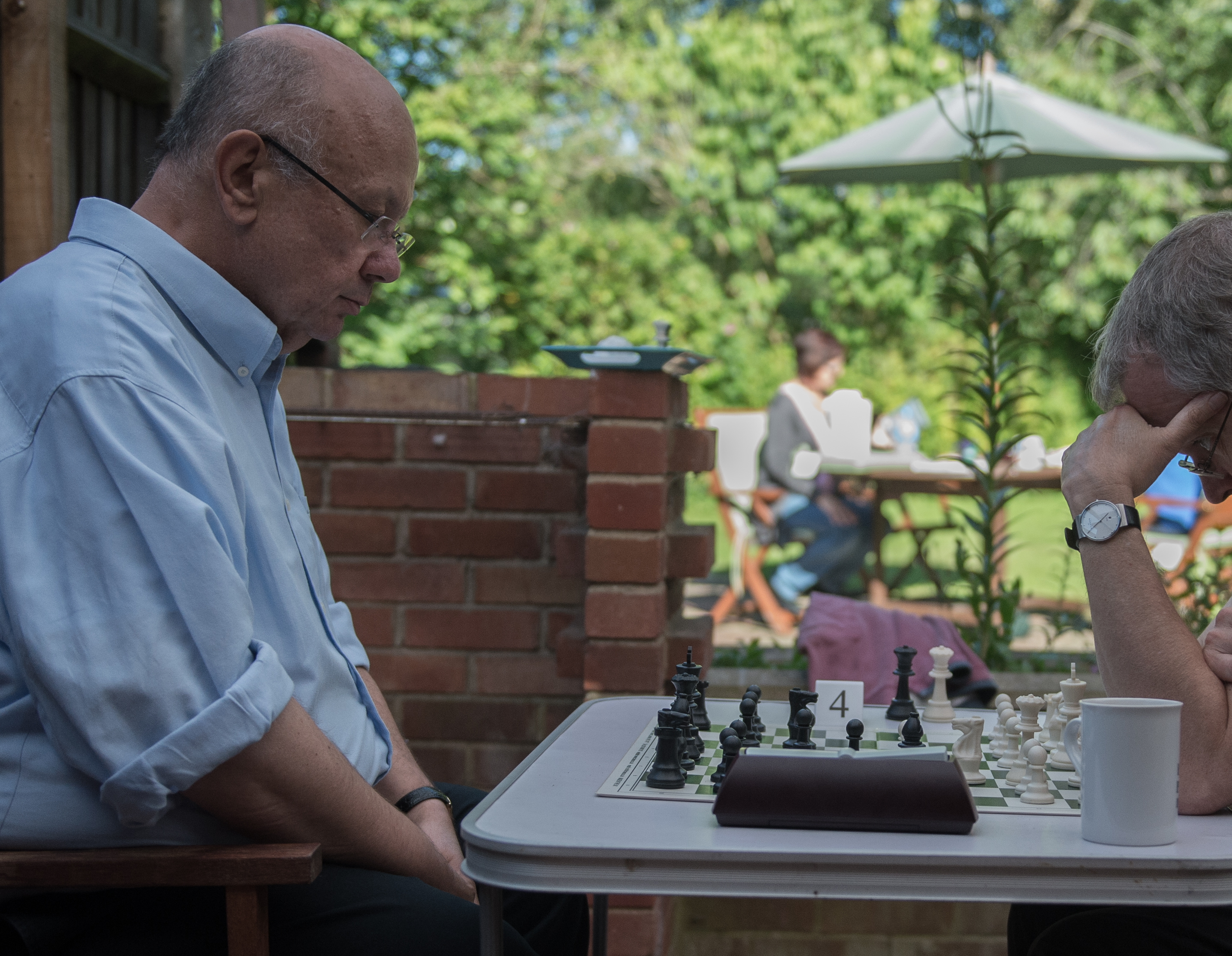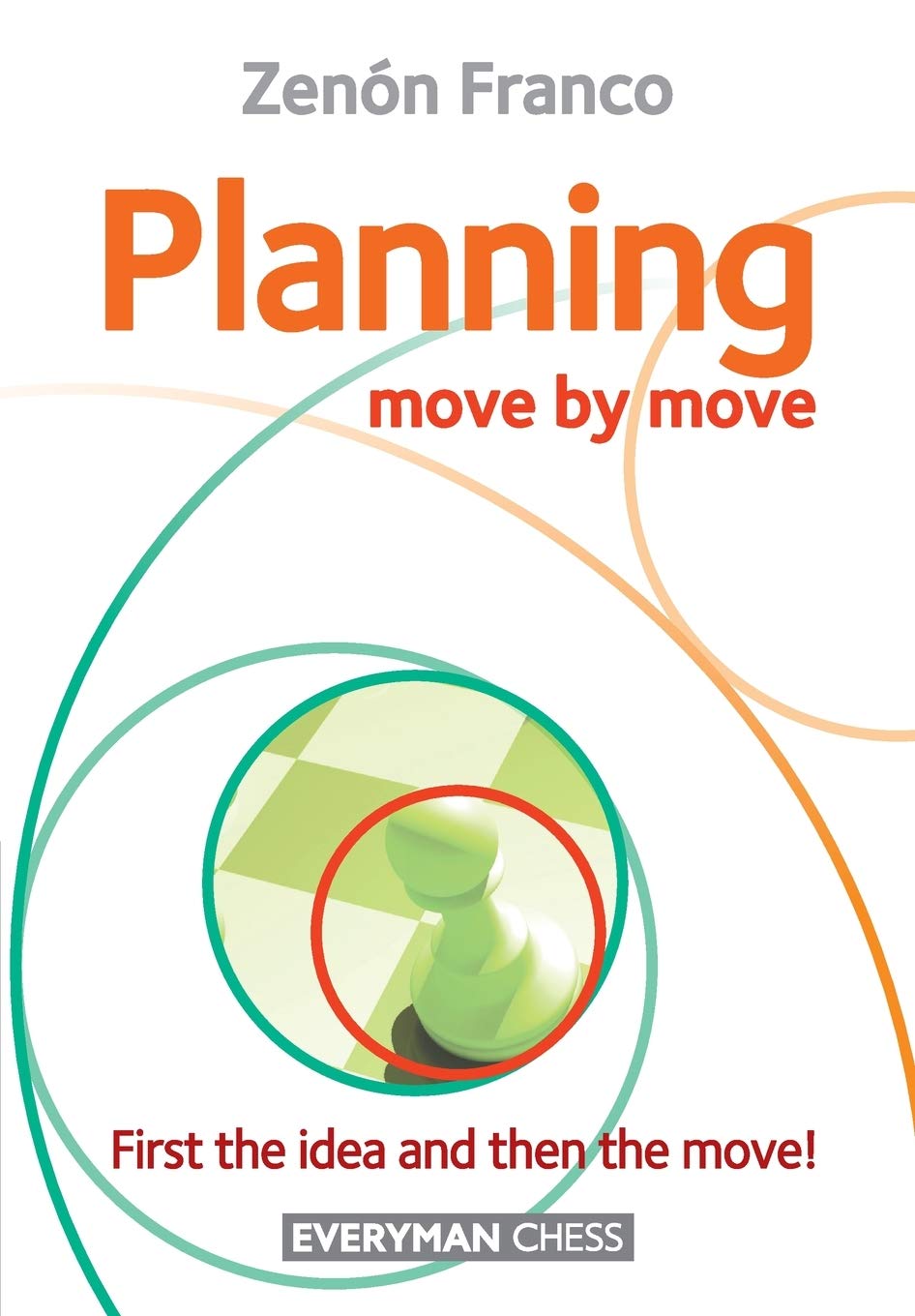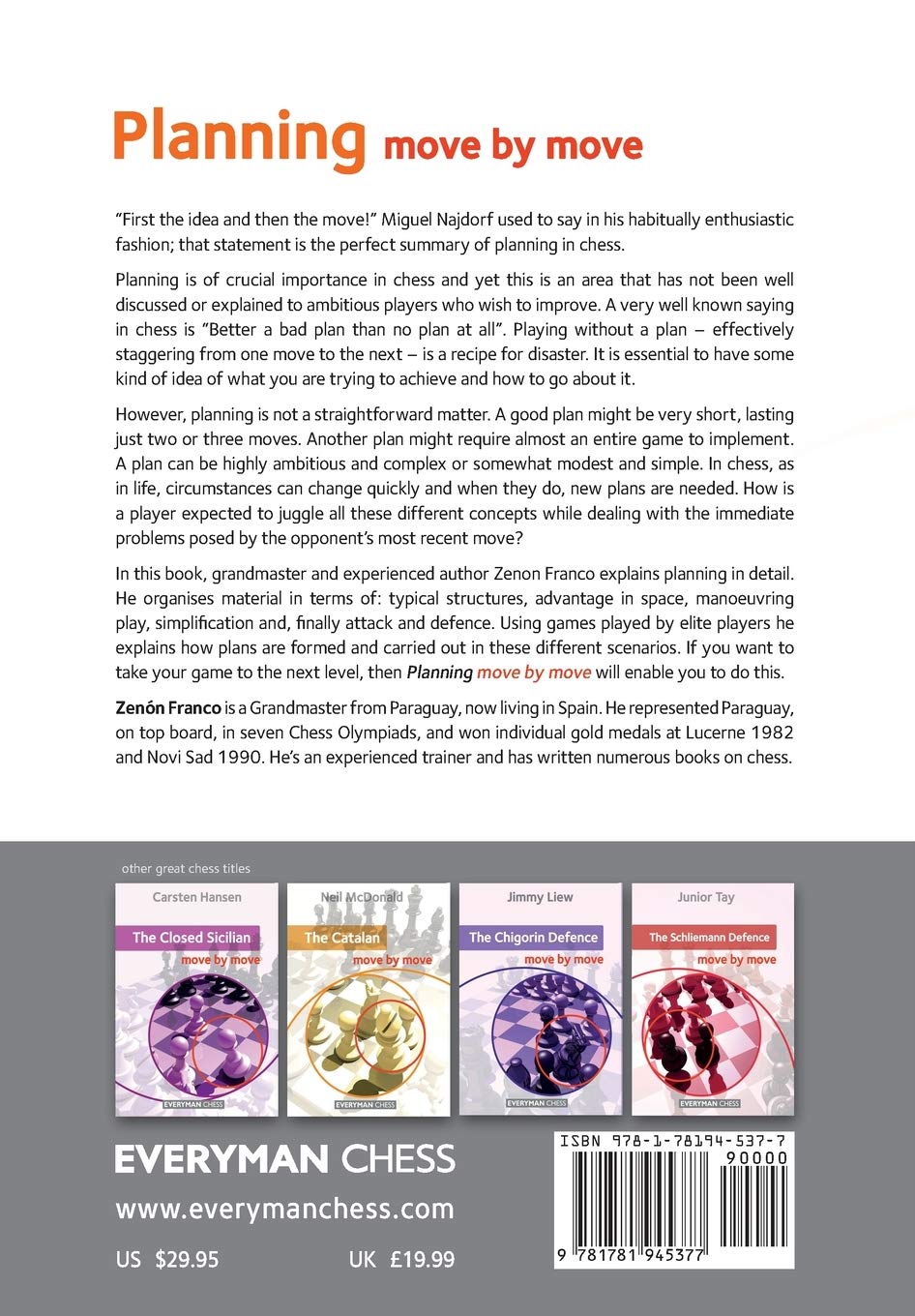Technical Decision Making in Chess : Boris Gelfand
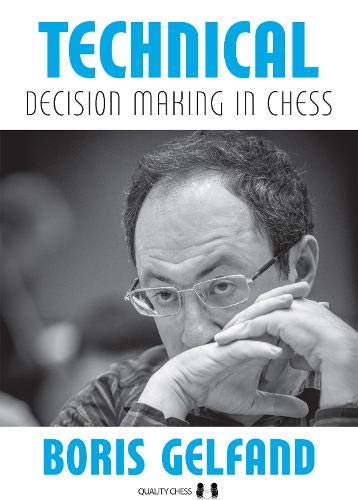
From the Publisher’s Foreword:
“In Technical Decision Making in Chess former World Championship Challenger Boris Gelfand discusses his path to decision making in endgames and positions where one side possesses a structural or material advantage.
This investigation into a top Grandmaster’s technical understanding will illuminate difficult parts of the game that many players find elusive. Concepts like the “Zone of one mistake” are certain to be a revelation to many.”
From the back cover:
“In Decision Making in Major Piece Endings former World Championship Challenger Boris Gelfand discusses his path to decision making in endgames involving rooks or queens, as well as the neglected “4th phase”. Countless games are decided by good or bad technique in such endgames, so readers are certain to benefit from the insights of a word-class Grandmaster on this vital topic.
Grandmaster Boris Gelfand has been an elite player for over 30 years, winning the World Cup, Olympiad Gold, the Candidates and many other top tournaments.”

Grandmaster Jacob Aagaard is the only chess writer to have won all the major awards for chess writing.

Reaction to previous volumes in the series:
In 2015 Positional Decision Making In Chess won the ECF Book of the Year award.
“The most interesting chess book I have read in the last quarter-century.” Mikhail Shereshevsky on Positional Decision Making in Chess.
This new Quality Chess publication Technical Decision Making In Chess uses high quality paper and the printing is clear. The book can easily be laid flat next to the board and does not require weights to prevent it from “self-closing” (a particular bugbear of ours !). Each diagram is clear and the instructional text is typeset in two column format, which, we find, enables the reader to maintain their place easily. Figurine algebraic notation is used throughout and the diagrams are placed adjacent to the relevant text and each major diagram at the beginning of a chapter has a “to move” indicator. Where a “to move” indicator is not present, it is obvious which colour is to move from the accompanying moves in a variation.
Each chapter is introduced with a contemporary photograph of a player or players or a tournament scene which launches each chapter in a engaging manner. This is followed by a Diagram Preview page which shows the critical analytical diagrams in the following chapter and invites the reader to practise their analysis and decision making! If you can work out most of the variations you are stronger than a world champion.
The introduction of this book makes it clear that this book is about “positions where the main goal is the conversion of a static advantage. (A static or long term advantage can be anything from a weakness to better pieces to an actual material advantage.) The flip side is included in this, meaning when it is the opponent who is trying to convert an advantage and we are trying to resist.”
It is not an endgame primer or manual on basic endgames as there are plenty of these theoretical works already in existence: the author’s particular favourites are named.
The author suggests how to best use the book by first analysing the endgames without a chess engine and/or tablebases to prevent lazy thinking by relying too heavily on engine assessments without understanding: “I just want to say that any active work with the the engine, where you are probing, analysing, asking questions, examining and so on, is useful. Any passive submission to the engine evaluations is likely to make you a worse player.”
“The key question for us has not been which line wins. but why the line is winning.”
The chapter themes are not the usual themes that are found in other endgame books, for example arranged by material, except for the last chapter on opposite bishop endgames. Boris Gelfand shows the vast majority of the endgames in relation to the whole game including the opening and middlegame transitions. This is the modern way to study endgames and gives a much deeper understanding of chess in general and is the approach of a Grandmaster.
Chapter 1 Akiba Showing The Way
In this chapter, Boris showcases the great endgame skill of Akiba Rubinstein in his famous game versus Richard Reti at Gothenburg 1920. It is black to move in the position below which is included in Reuben Fine’s Basic Chess Endings and many other endgame manuals. Black is clearly better with multiple advantages:
- Better pawn structure on the queen side, the c2 pawn needs constant vigilance. The white a2 is also a significant weakness.
- Better minor piece
- More space
- Better pawn structure on the kingside: the white kingside is full of holes, hence black’s best move given below
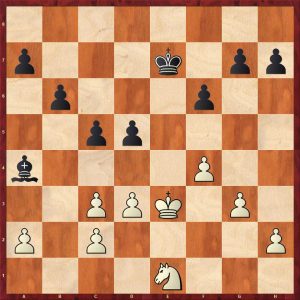
30…Bd7! was the strongest move, fixing the white pawns on the dark squares. They are not in danger from the bishop, but they are unable to prevent the black king from penetrating the position, which is the greatest problem for white.
Rubinstein made one bad move in this game: 30…Ke6? 31.g4! Now white can draw with accurate play, but in practice, he missed the drawing ideas.
31…Kd6 32.h3 g6 33.Kd2 Bd7
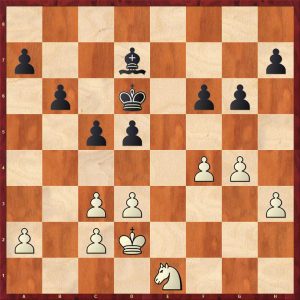
34.Nf3 Better is 34.Ng2! The idea is simple. White wants to play d3-d4 and Ne3, when he has managed to plug the holes on the light squares on the kingside to a significant degree. 34…d4 is critical, cutting across this idea. 35.cxd4 cxd4 36.c4 dxc3+ 37.Kxc3 This looks to be good for black as he has a potential outside passed pawn on the queenside, but white can apparently hold! 37…g5 38.f5 Bc6 39.Ne3 Bf3 40.d4 Kc6 41.a3 and white draws. This is extremely instructive and should be studied carefully.
The game continued 34…Ke7 Another idea is 34…h6 35.Ke3 g5 and Gelfand shows that white has a lot of fantastic resources to just hold the game. Buy the book to find out how! 35.Ke3 h5
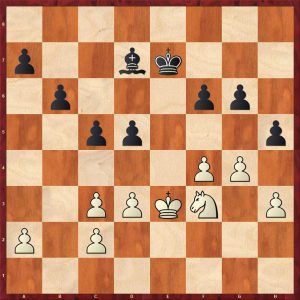
Reti now placed a horridly passive move 36.Nh2? which definitely loses. His last chance was a far sighted pawn sacrifice to draw as follows: 36.Nh4! Kf7 37.gxh5! gxh5 38.f5! Ke7 39.Ng6+ Kd6 40.h4! Bxf5 41.Nf4 Bg4 42.d4! and white has created an effective fortress. Black cannot make progress as he loses a pawn.
36…Kd6 37.Ke2? (37.gxh5 gxh5 38.h4 is tougher, but does not hold. 38…Bh3! The domination theme, a sample line is 39.Nf3 Ke6! 40. Nh2 b5 41.Kf2 Kd6 42.Ke3 a5 43.Nf3 Ke6 44.Nh2 a5 45.Kf2 (45.a3? Kf5 with the idea of b4 creating an outside a-pawn wins quickly) a3! 46.Ke3 Kf5 47.Kf3 Kg6 48.Ke3 d4+ 49.cxd4 Be6 50.Kd2 Bxa2 and black wins as the blockade does not hold.
The game continued 37…d4! Fixing a2 and c2 and widening the bridgehead for the king and bishop. 38.cxd4 cxd4
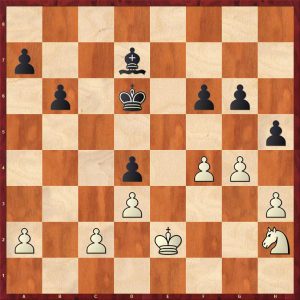
White lost quickly as follows 39.Kd2 hxg4 40.hxg4 Bc6 41.Ke2 Bd5 42.a3 b5 43.Nf1 a5 44.Nd2
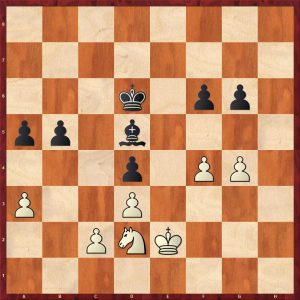
Now black won with the thematic 44…a4! forcing the creation of a passed a-pawn. We all know that knights are very poor at dealing with passed rook pawns. 45.Ne4+(45.Nb1 Kc5 46.c3 Ba2 wins) Bxe4 46.dxe4 b4 47.Kd2 bxa3 48.Kc1 g5 0-1
This ending is worthy of close study, not just to enjoy Rubinstein’s great technique, but also to discover hidden resources in difficult positions: a variation on the theory of infinite resistance.
Chapter 2 Turning Points
This section covers two interesting Gelfand games, one of which he wins and one he loses. As the chapter heading indicates, the key theme is recognising critical points in a game. The section culminates in the analysis of a fascinating same colour bishop endgame from the second game that was holdable by the inferior side.
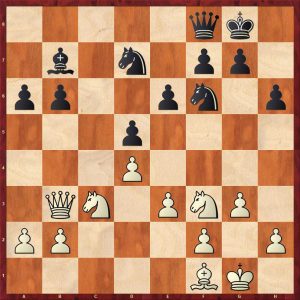
This is a middlegame position from a Catalan opening. Gelfand comments along the lines of white (Ivanchuk) is a little better with a better bishop and a bit more space. The important factor is that the position is easier to play for white and white risks little by playing on. Black’s main problem is the decision about when to stay passive (waiting) or go active. This general issue is covered more in chapter 3.
It is hard to believe that a player of Ivanchuk’s standard ends up in a losing position after only six more moves!
White played 21.Nel?! (Hoping to get the knight to b4 an apply some pressure. The simple and natural 21.Bd3 was better. After 21…Qd6 white can try 22.Ne5, 21…Qc8 with the idea of a5 and Ba6 exchanging the semi-bad bishop is logical. 22.Qa3 Qf8 23.Qa4 Qc8 24.Kg2 a5 25.Bb5 Ba6 26.Bxa6 Qaa6 27.Ne5 Qc8 28.Qc6 and white is better in the inevitable double knight ending.
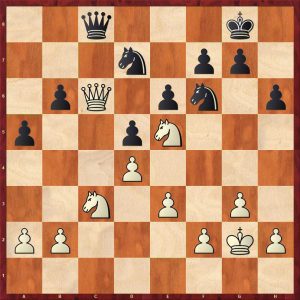
The game continued 21…Qc8 22.Nc2 Ne4! 23.Nxe4 dxe4
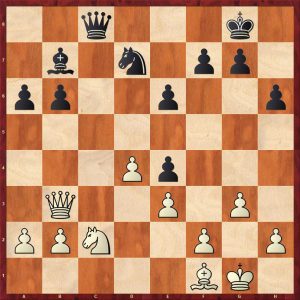
White probably mistakenly thought this pawn structure transformation was in his favour. This is incorrect. The e4-pawn is fixed on the colour of the bishop, however, the e4 pawn gives a space advantage, the d5 square and a pivot for a pawn storm on the king side.
White should probably play 24.a4 then Bd5 25.Qc3 Qxc3 26.bxc3 White is optically better but 26…Bb7! 27.Nb4 Nb8! Black is going to bring his king over and hold. White played 24.Qc3? Qxc3 25.Bxc3 b5! This looks dangerous putting another pawn on the colour of the bishop, but white’s bishop is also hemmed in by black’s pawns and black has a significant space advantage.
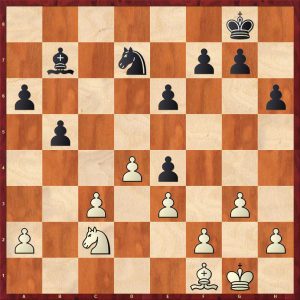
This is the crucial turning point of the game. White should have objectively realised that he had gone wrong and looked for way to draw. 26.c4 looks reasonable, but after bxc4 27.Bxc4 Nb6 28.Be2 a5 29.Kf1 Bd5 30.a3 Bc4!? white is a fraction worse. Black has rid himself of the semi-bad bishop and has a space advantage in a knight endgame.

White played 26.a4? (See two diagrams back above, gifting black an outside passed a-pawn) and duly lost. An horrendous positional error from a world class player. Black combined the passed a-pawn distraction with a general advance on the king side to create entry points for his king and win.
In the second game, the aforementioned bishop ending reached this critical position.
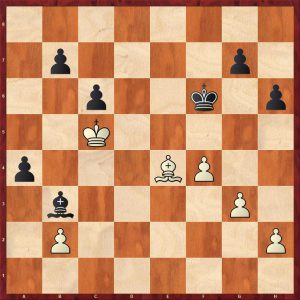
White played 44.h4? which loses. 44.Kb6! would have drawn. The analysis is complicated but black’s best try is 44…Ke6 (44…Bd1 also leads to draw by a single tempo) 45.Bg6 Kd6 46.Be4 c5 47.Kb5 Bd5 48.Bxd5 Kxd5 49.Kxa4 h5 50. Kb5 c4 51.Kb6 Ke4 52.Kxb7 Kf3 53.Kc6 Kg2 54.Kc5 Kxh2 55.Kxc4 Kxg3 56.b4 h4 57.b5 h3 58.b6 h2 59.b7 h1=Q 60.b8=Q Qe4+ 61.Kc5 Qxf4 (see below) with a theoretical draw but still a practical challenge. The companion volume Decision Making in Major Piece Endings covers this type of ending.
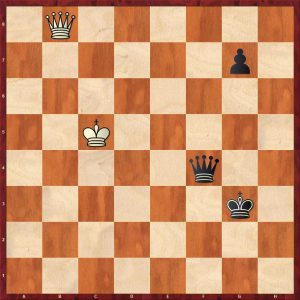
This whole bishop ending is worthy of close study as white has some amazing ideas to hold an ending that just looks lost.
Chapter 3 covers the important topic of active or passive defence.
Gelfand demonstrates this theme with a complex double rook and knight endgame. Here is a position a few moves before that endgame, where black missed a chance to equalise comfortably.
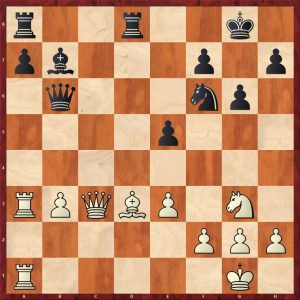
Gelfand points out that active defence with 23…Nd5! forces easy equality. 24.Qxe5 Nxe3! 25.Be4= (25.Qxe3? Qxe3 26.fxe3 Rxd3 27.Rxa7 Rxa7 28.Rxa7 Rxb3 and black is playing for a win)
Black played the passive 23…Qc6?! forcing a queen exchange. This is a common mistake when a (weaker) player wants a draw and exchanges pieces with small concessions 24.Qxc6 Bxc6 25.Bf1! Rdb8?! (26…Rab8! is more active when white can win a pawn but has great technical difficulties) 26.Bc4?! ( 26.Ra6! Rb6 27.Bc4 Bd5 28.Bxd5 Nxd5 29.Rxb6 Nxb6 30.Ra5! White is definitely in plus equals mode playing for two results.) 26…Bd5?! (26…Bb5 equalises) 27.Nxd5 Nxd5 28.Ne4 Rb4 29. Nd2! Rb7 Reaching the position below.
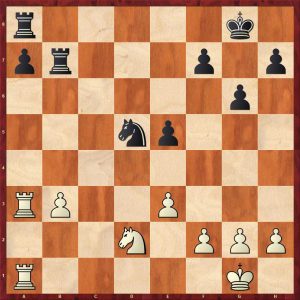
White played 30.Ra5 which sets a small trap. 30.g4! was probably better gaining space and attempting to isolate the e5 pawn from its friends. Black played the obvious 30…Rd8?! activating the rook (30…Nc3 is better). After the game move, white has an edge and it’s very instructive to see how Gelfand increases his advantage in a practical game with mistakes from both sides.
Chapter 4 covers the common idea of A Bad Plan is Better than No Plan.
Here is a complex middlegame position.
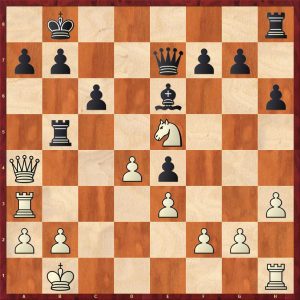
The penalties of planless play are amply demonstrated in the middlegame between moves 21-30 where planless play by black spoils an equal position resulting in a difficult heavy piece middlegame and subsequent losing king and pawn ending.
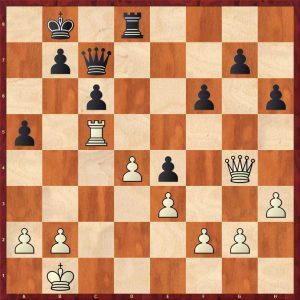
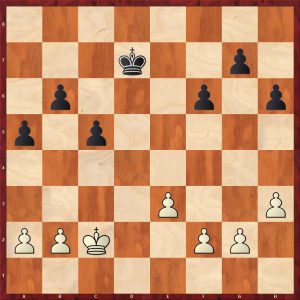
White to move on move 40. What would you play? 40.a4! springs to mind spoiling black’s majority and winning.
Chapter 5 is all about long games with an increment.
Gelfand demonstrates two games, the first is a complex rook and knight endgame; the second of which is a very long queen and minor piece ending with an extra pawn.
This queen and minor piece ending has just arisen after white forced the exchange of rooks a few moves ago.
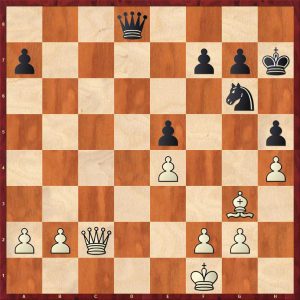
White played 34.Qe2? which is a blunder. 34.Kg1 is obviously better, 34…Nxh4 35.Bxe5 activates the bishop increasing white’s advantage. 34…Kg8? Missing 34…Nf4! 35. Qf3 (35.Bxf4 Qxh4! threatening mate) 35.Kg1 Qd2 with loads of counterplay 35.Kg1 Nxh4 36. Bxe5 Qa5 37.Bg3 Ng6
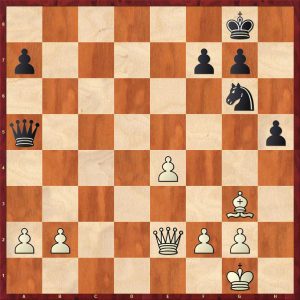
White has increased his advantage by activating his bishop.
I shall show a couple of other positions from this instructive game with Gelfand’s pithy comments. Black sacrifices the h-pawn to open up the white king.
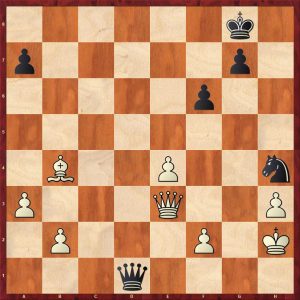
White played 45.Qg3?! instead of the consolidating 45.Bc3! “White consolidates and is on the way to winning the game. In these long games where it is very hard to spot the critical moments, because every moment is a mini-version of it, inaccuracies are bound to happen. This is why it is important to analyse the games and improve our feeling for how to spend our time, how to organise our pieces, how to organise our thinking and how to control the opponent’s counterplay. A lot of happens subconsciously. We analyse the games, find out what actually happened, compared to our experience during the game, and our feeling for the details will be slightly better the next time around.”
At move 49 this position was reached:
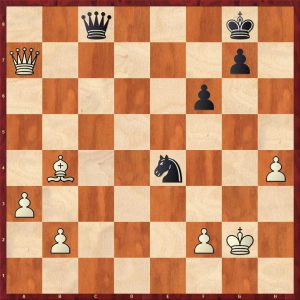
Gelfand played 50.Qe3!? a perfectly decent move. Gelfand comments that the computer suggests 50.Kf3 Qf5+ 51.Ke2 Qe5 52.Qe7 Qxb2+ 53.Ke3 reaching this position:
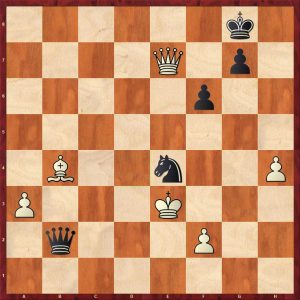
The knight is lost after 53…Nxf2 54.Qe6+ Kh8 55.Qc8+ Kh7 56.Qf5+ A brilliant line.
Gelfand makes a wise and honest observation: “Obviously this is the type of thing the engine does much better than a human. Finding a tactic in a position where there are a large number of possibilities. No human can go 2-3 moves deep in all lines and see these types of options. So, all in all, I pay attention to this kind of information, but I do not regret not seeing it.”
At move 101 (see position below), Boris comments: “At this point I was confident that I would win. I knew what I should do. The queen controls everything and the white king can go forward. White is also winning in this position if there are no f- or g- pawns on the board….White can also play f5-f6, creating a situation where the black king is exposed, liniting the number of checks Black is able to give. The general idea is basic: White will aim to put the queen in-between on one of these checks, spiking the black king, forcing the exchange of queens.”
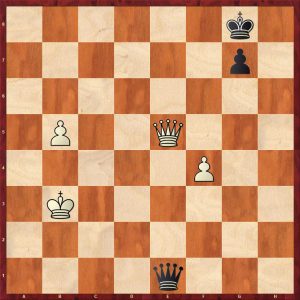
Having read the relevant section in the companion volume “Decision Making In Major Piece Endings” even the reviewer would be confident of victory in this technical position.
Chapter 6 When is the Right Time to Run?
This chapter is about “situations in both the middlegame and the endgame, where both players had to make decisions about when to improve their position and target the opponent’s resources and when to roll the dice and attack the king or let passed pawns roll. This is perhaps the most essential theme in top level chess, as a good feeling for what kind of action is needed in various positions, when to calculate and when simply to improve the position, is worth many points.”
Gelfand demonstrates this with a complex rook and knight ending.
Gelfand also brings out a pertinent comment about computer evaluations in this section. This is a position from a short variation in that game:
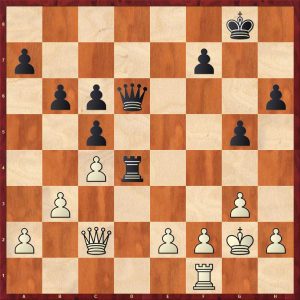
Boris says “Stockfish helpfully tells us that the position is still equal. But is it really? Black is full control of the d-file and can penetrate to the second rank…..Black is much more comfortable….”
Objectively, a strong engine would hold as white, but who would choose white?
Chapter 7 Choosing the Right Transformations
This chapter shows a complex queen and knight ending which is really interesting considering all the transformations to knight endings.
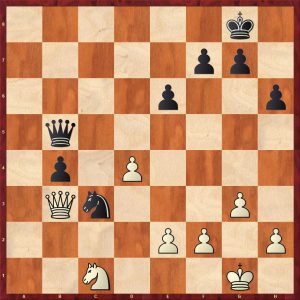
Caruana-Gelfand Amsterdam 2010 Move 30
Black played a technical, far reaching move 30…Qg5! forcing 31.e3 and the weakening of the f3 square. Gelfand stresses the point that black cannot win on the queenside alone and must create weaknesses on the kingside. Gelfand analyses the alternative 30…Qa6 to a probable win giving some superb analysis including a brilliant positional knight sacrifice creating passed a- and h-pawns which is definitely worth studying:
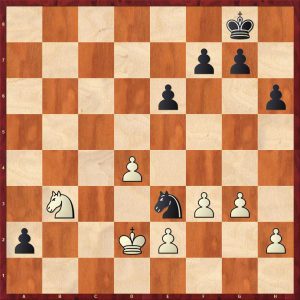
37…Nf1+ 38.Ke1 Nxh2 39. Kf2 Kf8! 40. Kg2 Nxf3 41.Kxf3 (41.exf3 h5 ensures a passed h-pawn) f5! Black wins by a tempo.
Chapter 8 – Karjakin
This game is a technical queenless middlegame in the Chebanenko.
This position gives a flavour of the struggle:
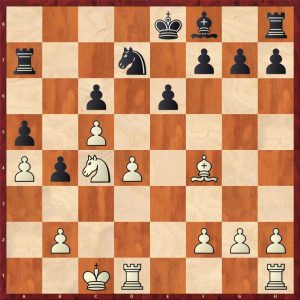
White is clearly better, but how does white proceed here? Buy the book to find out.
Chapters 9 and 10 are titled Stalemate and Stalemated respectively.
Here is an amusing finish:
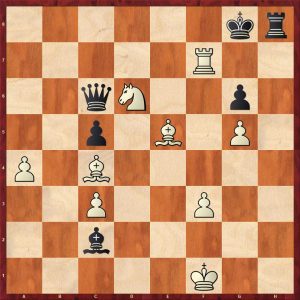
Black is under the cosh with a killing rook discovery on the cards.
Bacrot played 34…Bd3+!! 35.Bxd3 Qd5 36.Bc4 Renewing the threats. 36…Rh1+ 37.Kg2 Qd2+! 38.Kxh1 Qg2+ stalemate
Chapter 11 The Relevance Of Endgame Studies
This chapter is good and the title is self explanatory. Solving endgame studies is useful for getting a feel for the potential of the pieces – not only in the endgame. Endgame studies are the artistic side of chess. Here is an instructive and entertaining study composed by Sergey Tkachenko & Boris Gelfand:
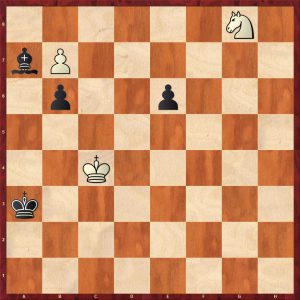
I will not give the solution, but there is a beautiful zugzwang, so buy the book to find out!
Chapter 12 Geometry
This chapter has an intriguing title but covers mainly R+N v R and positions with R v N or B with just a few pawns. Here is a good example:
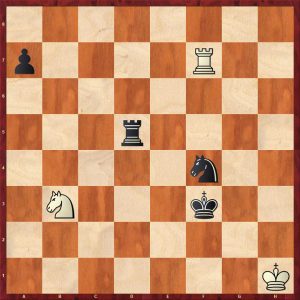
White is in great danger here with his monarch in the corner. 65. Rxa7 loses as it unpins the knight allowing the prosaic mate 65..Rh5+ 66. Kg1 Ne2+ 67.Kf1 Rh1# The move that springs to mind is 65.Kg1. In fact this does draw as does 65.Kh2.
White actually played 65.Nd4+? to distract the black rook, so he could capture the a7-pawn. After 65…Rxd4 66.Rxa7 black has a pretty win with 66…Rd6! 67.Ra2 (67.Rf7 Kg3 68.Rg7+ Ng6! shuts out the rook and mates) 67…Rh6+ 68. Rh2 Nh3! with a beautiful zugzwang that I have not seen before.
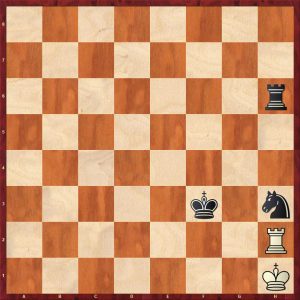
69.Rh2 Nf2+ 70.Kg1 Rh1#
Chapter 13 – Endings with Opposite Coloured Bishops
This is one of the reviewer’s favourite chapters as it shows the immense complexity of such endgames.
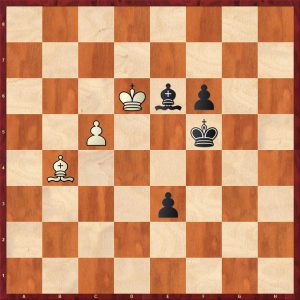
White has just played 71.Bxb4 and reached the haven of an opposite coloured bishop endgame. This is quite a common type of position reached in practice. This position is a draw but it is difficult and a world class player of Peter Leko’s standard did not succeed in practice. Buy the book to find out how black won and how white could have drawn.
To summarise this is a very good technical book with many instructive games with deep analysis and didactic commentary. The book is clearly aimed at aspiring FIDE2000+ (ECF175+) players and above.
FM Richard Webb, Chineham, Hampshire, May 12th 2021

- Paperback : 320 pages
- Publisher:Quality Chess UK LLP (28 April 2021)
- Language: English
- ISBN-10:178483064X
- ISBN-13:978-1784830649
- Product Dimensions: 17.35 x 1.52 x 24.16 cm
Official web site of Quality Chess


